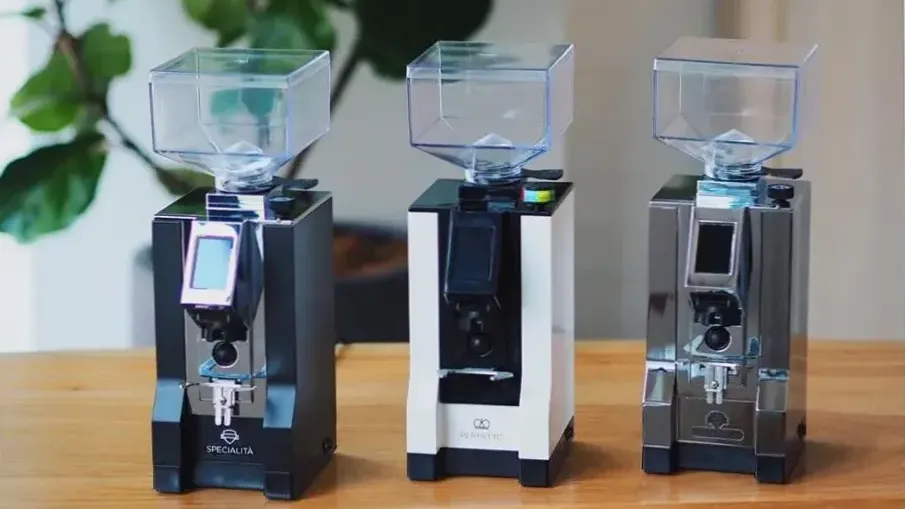Seeking the perfect brew or just wondering how a coffee should be done? Check out why the grinders make all the difference in the cup!

Blade grinders
Blade grinders use a spinning blade to chop coffee beans into smaller pieces. They produce less consistent grinds than burr grinders, and the grind size can vary depending on how long we grind the beans. This can lead to uneven extraction and poor-tasting coffee.
| Feature | Burr Grinder | Blade Grinder |
|---|---|---|
| Grind quality | Consistent and even | Less consistent and uneven |
| Grind size control | More precise | Less precise or non-existent |
| Grinding noise | Quieter | Louder |
| Cost | More expensive | Less expensive |
| Maintenance | More difficult | Easier |
Some of blade grinders are interchangeably used a spice grinders. Since spices don’t require consistent, even grind size but simply grinding the spices into dust, this is a job perfectly suited for blade grinders.
Burr Grinders
Conical Burr Grinders

Conical burrs, characterized by their distinctive cone shape, are prevalent in both commercial and home grinders.
They are the preferred choice for manual grinders, with some exceptions.

These burrs consist of an inner cone-shaped burr that fits snugly within a ring-shaped outer burr. The inner burr rotates, while the outer burr remains stationary. The distance between these burrs determines the fineness of the ground coffee. As the distance decreases, the grind becomes finer. Gravity plays a crucial role in this process, as it guides the coffee beans from top to bottom. The beans slide between the burrs, where they are ground and then transferred down the chute into the grinds receptacle or portafilter.
Flat Burr Grinders
Flat burrs, characterized by their flat, disc-like shape, are typically encountered in commercial espresso machines and are also available in higher-end home grinders.

These burrs consist of two round, serrated discs that align horizontally with one another. Similar to conical burrs, one burr remains stationary while the other rotates. Coffee beans are pushed through and crushed to the desired size based on the distance between the burrs. However, unlike conical burrs, the ground coffee is expelled through the sides.

Conical Burrs VS Flat Burrs

| Feature | Conical Burr | Flat Burr |
|---|---|---|
| Grind Consistency | Generally good, can be very good in high-quality models | Generally excellent, especially in high-quality models |
| Durability | Durable with proper care, material dependent (ceramic vs. stainless steel) | Durable with proper care, material dependent (ceramic vs. stainless steel) |
| Suitable for Espresso | Good, especially with high-quality models | Good, may offer slight edge in consistency for espresso in high-quality models |
| Suitable for Other Brewing Methods | Excellent | Excellent |
| Efficiency | Can be efficient depending on design and motor power | Can be efficient depending on design and motor power |
| Noise Level | Generally quieter | Generally noisier |
| Price | Can be less expensive in lower-quality models | Can be more expensive in higher-quality models |
Summary
- Blade grinders are a poor choice for grinding coffee.
- Conical burrs are used in most hand grinders and a popular choice for home grinders.
- Flat burrs are the industry standard for commercial grinders and popular choice for high quality home grinders.